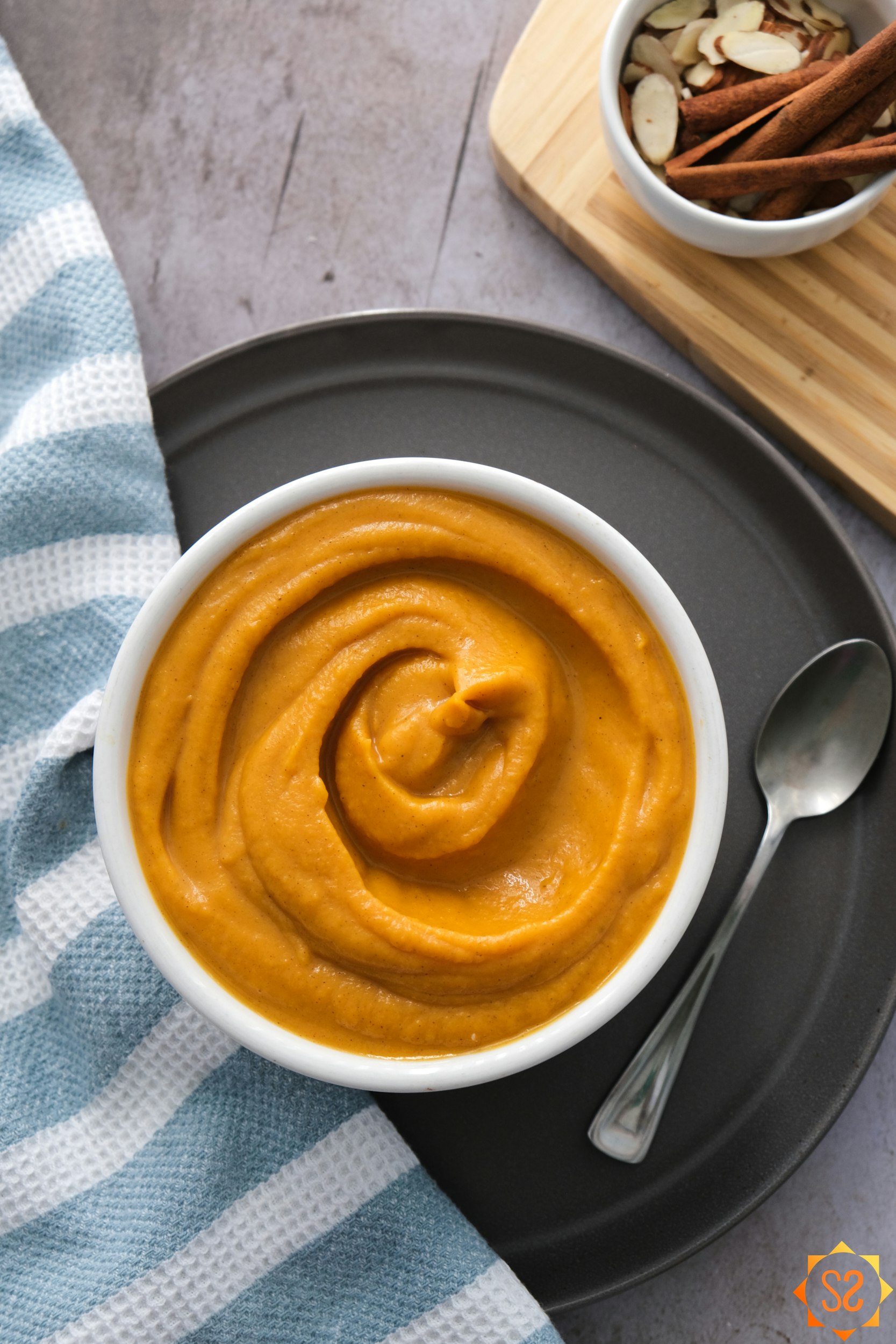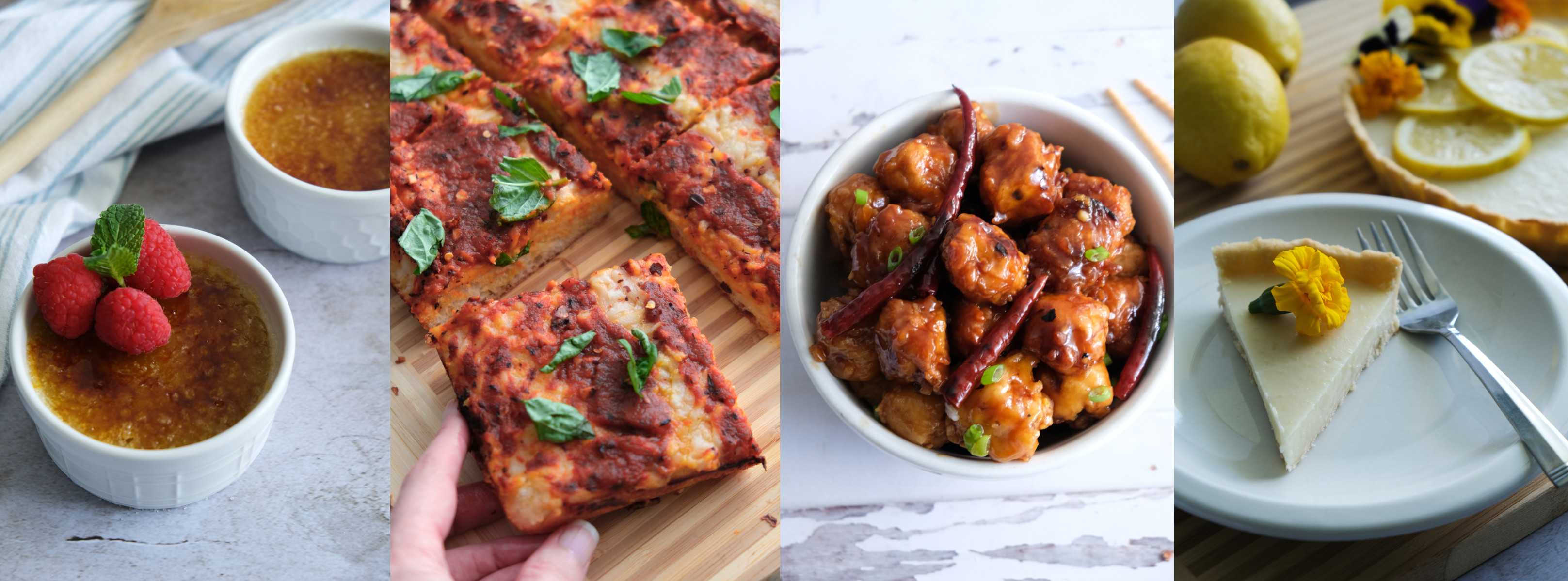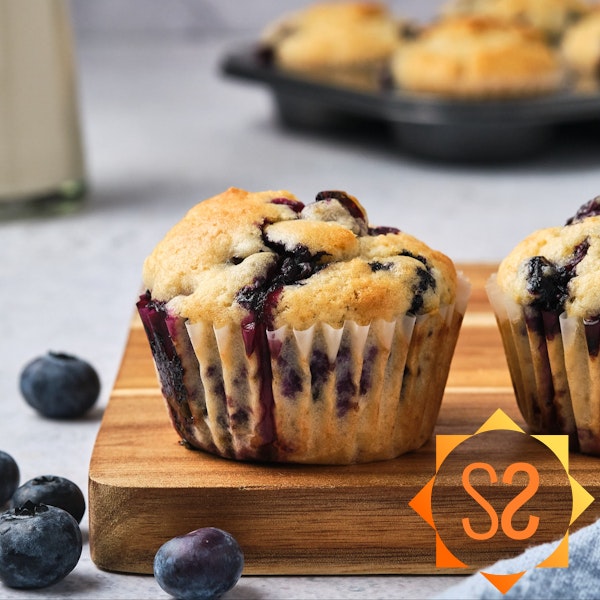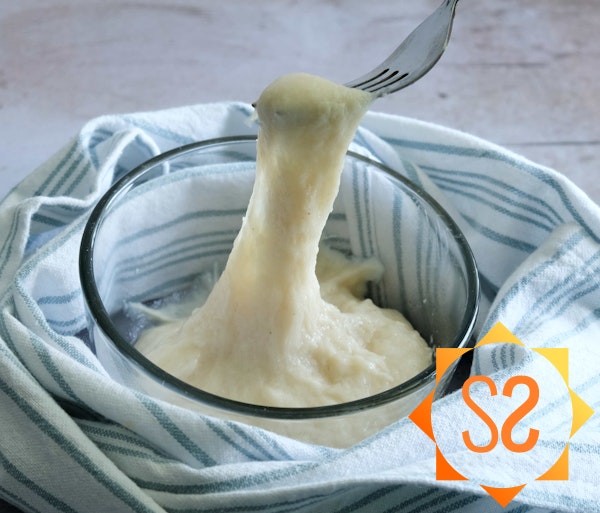Mashed Butternut Squash
February 18, 2021
Butternut squash is one of my favorite foods, as it's so versatile, delicious, and healthy. It's often just part of a dish with many flavors, but I also enjoy it on its own, as mashed butternut squash with a few added ingredients.
As much as I love butternut squash, it can be a headache to cut and peel it. Fortunately, this mashed butternut squash recipe doesn't require any peeling or cubing! After three slices (plus spooning out the seeds), the squash goes in the oven and then the flesh gets easily scraped away from the skin.
To cut the butternut squash for roasting, you will want to use a sharp knife to slice off about 1/4" of the top and bottom of the squash. Then, stand it upright and slice it in half. It's a good idea to get a non-slip cutting board for additional safety since butternut squash can be tough to cut through.
This mashed butternut squash recipe uses maple syrup, cinnamon, and nutmeg to enhance the natural sweetness of the squash. To create a smooth, creamy, whipped texture, we'll blend it all together in the blender, after mashing it with a fork or mixer. It might be more accurate to call it whipped butternut squash or butternut squash puree; either way, it's the perfect side dish for Thanksgiving or any holiday feast! Try it with a hearty main course, like my holiday lentil loaf.
As tasty and sweet as this butternut squash side dish is, it's healthy, too! Each serving is just 70 calories, with 4 grams of sugar, and has lots of Vitamin A and Vitamin C.

Frequently Asked Questions
Can I use frozen or cubed butternut squash? I don't recommend using cubed or frozen squash because it will get too dry when roasting. You could steam the cubed squash, then mash it, but the flavor may not be as good.
Do I need to blend the squash? Is it okay to just mash it? It depends on the texture you like. Blending creates a smoother, creamier texture, but you can skip the blender if you want a chunkier texture.
How long can I store mashed butternut squash? Mashed butternut squash should last 4-5 days in an air-tight container in the refrigerator. You can also freeze it for up to 2 months.
Can I eat the seeds of my butternut squash? Yes! Wash them to remove the flesh of the squash, then let them dry. Toss the seeds with olive oil and salt, and place on a parchment-lined baking tray. Bake at 300 degrees Fahrenheit for about 20 minutes (check them after 15 minutes), and remove from the oven when they're golden brown.
What if I can't find vegan butter in my area? If vegan butter is unavailable in your area, or unreasonably priced, try my homemade vegan butter recipe.
Mashed Butternut Squash
Yield8 servings
Prep Time25 minutes
Cook Time40 minutes
Total Time1 hour, 35 minutes
Ingredients
- one medium butternut squash (about 3 pounds/ 1.36 kg)
- 1/4 cup plain, unsweetened almond milk (or other non-dairy milk)
- 2 tbsp. maple syrup
- 1/2 tsp. ground cinnamon
- 1/8 tsp. ground nutmeg
- 1/8 tsp. salt
Instructions
Preheat the oven to 400°F (205°C). Line a baking sheet with aluminum foil or parchment paper.
Cut the top and bottom off your squash, then cut it in half length-wise. Use a spoon to scrape out the seeds. Rub the inner flesh of the squash with vegan butter, leaving some clumps of butter on the squash, then sprinkle with cinnamon. Place the squash halves cut-side up on the baking tray, and roast at 400°F (205°C) for 45-50 minutes, until the squash is fork-tender. Let it cool until it can be handled, about 30 minutes.
![On the left, a butternut squash is cut in half on a cutting board with the top and bottom of the squash above the squash and a knife to the right; on the right: butternut squash rubbed with vegan butter and sprinkled with cinnamon on a parchment-lined baking tray.]() Left: Butternut squash, cut in half; Right: Squash coated with butter and cinnamon on a parchment-lined baking tray.
Left: Butternut squash, cut in half; Right: Squash coated with butter and cinnamon on a parchment-lined baking tray.Scrape out the flesh of the roasted butternut squash into a large mixing bowl (approximately 3 packed cups of squash). Add in the almond milk, vegan butter, maple syrup, cinnamon, nutmeg, and salt. Use a fork or a potato masher to mash the squash together with the other ingredients. The vegan butter should melt on its own if the squash is still warm, but if the squash has cooled completely, you should melt the butter before mixing it in.
![On the left: squash, almond milk, vegan butter, and seasonings in a bowl with a potato masher before mashing; Right: Butternut squash and other ingredients in a bowl with a potato masher after mashing.]() On the left: squash, almond milk, vegan butter, and seasonings before mashing; Right: Butternut squash and other ingredients after mashing.
On the left: squash, almond milk, vegan butter, and seasonings before mashing; Right: Butternut squash and other ingredients after mashing.Transfer the mixture to a blender. Blend on a medium-high speed until the squash is creamy and fluffy.
If your squash has cooled, transfer it to a medium saucepan and heat on medium-low heat, stirring constantly, until it is warm. Transfer the mixture to a large serving bowl, then garnish with sliced almonds and sage leaves, if desired. Serve immediately.
Notes & Hints
My medium-sized butternut squash produced about 3 packed cups of roasted squash (712 grams); if you have significantly more or less squash, you may wish to adjust the amounts of the other ingredients.
If you prefer a chunkier texture, you can skip the blender and just mash the squash and other ingredients.
If your blender isn't powerful enough to handle all of the squash at once, split it up and blend it in two batches.
Leftovers: Store in the refrigerator in an air-tight container for 4-5 days, or in the freezer for up to 2 months.
Reheat: If frozen, allow to defrost before heating. Warm in a medium saucepan on medium-low heat, stirring in almond milk as needed.
Nutrition Data
Serving Size: 1/8 of recipe; Calories: 74; Fat: 3 g.; Saturated Fat: 2 g.; Cholesterol: 0 mg.; Sodium: 49 mg.; Carbohydrates: 12 g.; Fiber: 2 g.; Sugar: 5 g.; Protein: 0 g.; Vitamin A: 432 mcg. RAE; Vitamin B12: 0 mcg.; Vitamin C: 12 mg.; Vitamin D: 0 mcg.; Calcium: 36 mg.; Iron: 0 mg.; Potassium: 221 mg.; Zinc: 0 mg.Note: This data should be used only as an estimate. Please see the nutrition section of my terms and conditions for more information on how this data is calculated.
Vegan recipes in your inbox
Join the community and get my newest and best yummy vegan recipes sent right to your email!

Share this:





















Leave a Comment
I love reading comments! I'll do my best to answer questions, too. If you made the recipe, please leave a star rating, it helps support the blog so I can make more recipes and articles. Thank you!
says